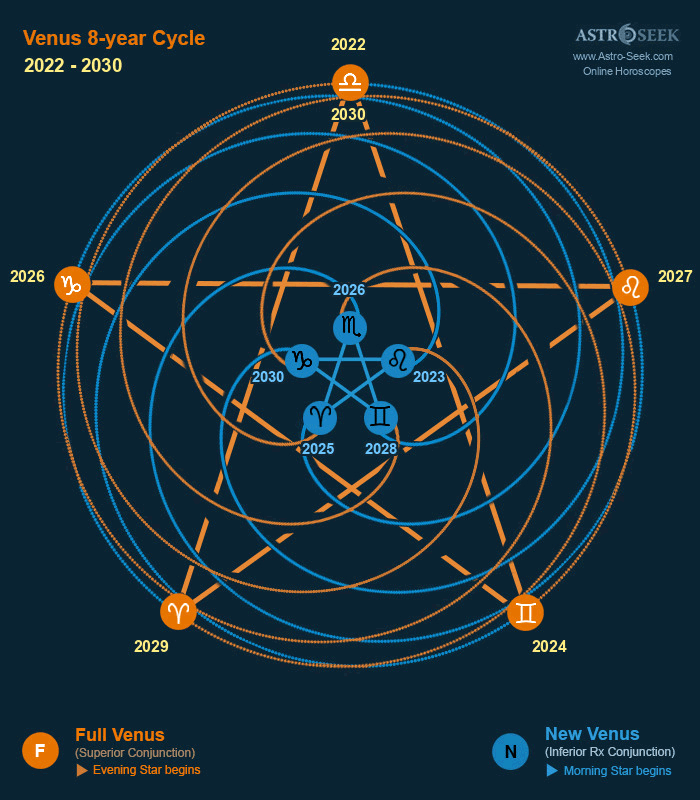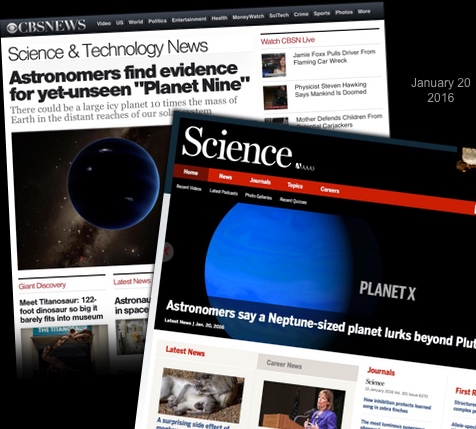|
|
General: VENUS MORNING "STAR" (FIRST QUARTER) EVENING "STAR" (THIRD QUARTER/"LETTER D")
Scegli un’altra bacheca |
|
Rispondi |
Messaggio 1 di 17 di questo argomento |
|
|
|
|
|
Rispondi |
Messaggio 3 di 17 di questo argomento |
|
Astro Bob: See Venus at its most brilliant this week
"Astro" Bob King is a freelance writer for the News Tribune. Read more of his work at astrobob.areavoices.com.

The light of the crescent moon (left) and Venus is softened by high clouds on April 26 at dusk. (Bob King, for the News Tribune)
By Bob King, for the News Tribune
April 28, 2020 at 10:52 AM
Venus always looks bright, right? Well, yes and no. Its brightness varies with its phase and distance from the Earth. The planet is faintest when located on the opposite side of the sun from the Earth. Ironically, that’s also when it’s in “full moon” phase. But because it’s so far away at that time the Full Venus is tiny and about three times fainter than when it’s a crescent. At crescent phase the planet is much closer to the Earth (see diagram below).
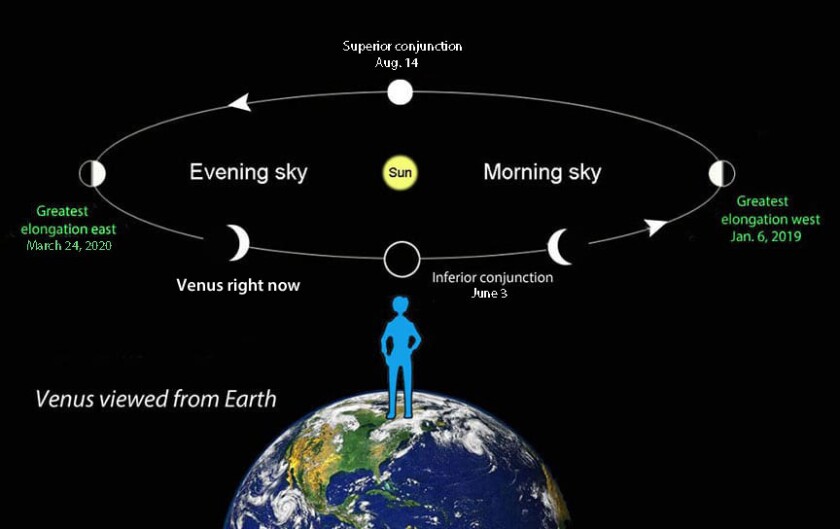
As Venus cycles around the sun very 225 days, it passes between the Earth and sun at inferior conjunction and on the opposite side of the sun in superior conjunction, when it looks like a tiny full moon. During this time, the changing angle the planet makes with the sun causes it show phases just like the moon. (Bob King, for the News Tribune)
On Monday night, April 27th Venus achieved greatest brilliancy at magnitude –4.7, the same brightness of a day-old moon if you could scrunch it down into a point of light. Greatest brilliancy strikes a balance between the size of the planet and how much of it is illuminated. Venus is brightest when relatively near the Earth at the same time it’s a thick crescent. While the planet will continue to approach the Earth in the coming weeks its crescent will enlarge but also thin. With less area illuminated by sunlight Venus will fade slightly.

Venus through a small telescope. The planet is a 26 percent-illuminated crescent and shines at greatest brilliancy this week. (Photo courtesy of Stellarium)
You can see the planet’s phase easily in any telescope or spotting scope. Skywatchers with 10x binoculars should also be able to discern the crescent during early dusk when the still-blue sky tempers its glare.
Why is Venus so darn bright in the first place? In a word — clouds. Overcast skies have been the rule across the planet for probably millions of years. While clouds keep the planet’s surface in perpetual gloom the view from this side is nothing short of amazing. Sunlight reflected off that cloud cover is responsible for Venus’s brilliance.
Earthly clouds are made of droplets or crystals of water but Venusian clouds are composed of toxic sulfuric acid droplets and sulfur dioxide. We see the planet’s upper cloud deck some 37-43 miles 60-70 km above the surface, about 3-4 times the altitude of high cirrus clouds on Earth. The planet’s water boiled off long ago, leaving sulfur dioxide from past (and possibly present) volcanic eruptions as the source of its clouds.
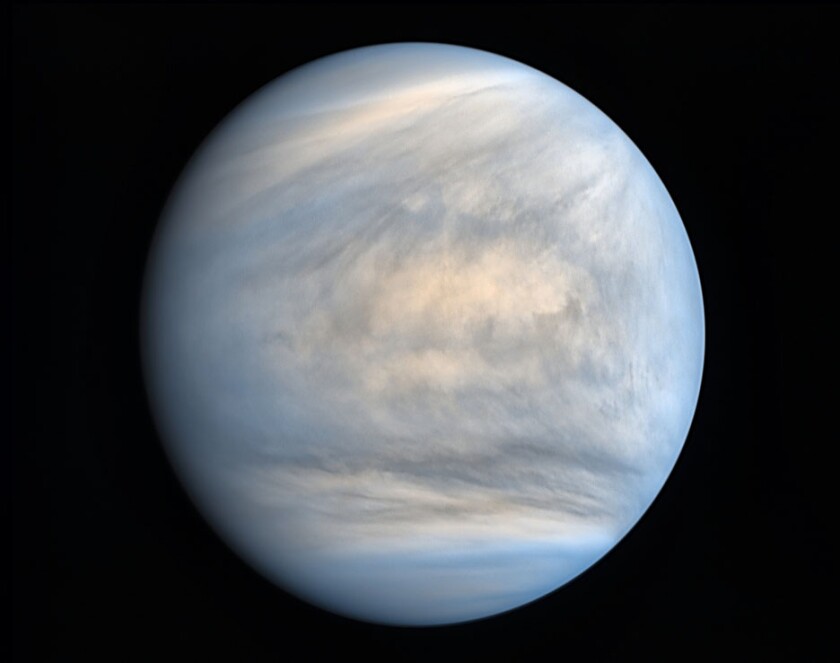
Japan’s Akatsuki probe took this global photo of Venus in ultraviolet light. In regular light the clouds are essentially featureless but in UV they reveal texture and structure. The dark streaks are some of the unknown UV absorbers (see below). JAXA / ISAS / DARTS / Damia-Bouic
Although Venus spins very slowly, taking 243 to turn once on its axis, the upper clouds rotate around the planet once every four Earth days. The planet’s atmosphere is composed of 96.5 percent carbon dioxide which combines forces with sulfur dioxide to trap heat and drive up the surface temperature to 864° F (462° C). Not what you’d call friendly to life.
But at the height of the clouds the temperature is much like that at the surface of the Earth making Venus’s upper atmosphere one of the most potentially habitable locales in the solar system. Even the late Carl Sagan considered the possibility that they might harbor vast colonies of bacteria. In a 1963 paper he hypothesized that the dark patches seen in ultraviolet light photographs of the planet called “ unknown UV absorbers ” could be made of bacteria that absorbed the light. Exactly what the dark splotches are remains a mystery to this day.
Mystery. Now there’s a fine word. It’s mystery that fuels curiosity and the urge to seek answers to our questions. Mystery is at the heart of everything. Nature is forever handing out business cards inviting us to “call”. I hope you call on Venus tonight.
https://www.duluthnewstribune.com/news/astro-bob-see-venus-at-its-most-brilliant-this-week |
|
|
|
Rispondi |
Messaggio 4 di 17 di questo argomento |
|
Aprenda sobre el extraño ciclo de tránsito de Venus.
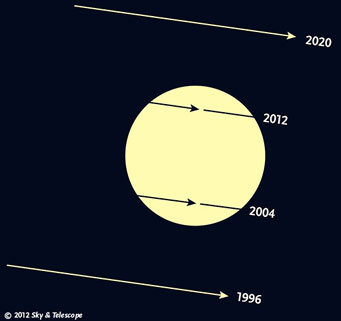
Venus siguió estas trayectorias a través del Sol en 2004 y 2012. La Tierra no vio un tránsito en 1996 y no verá otro en 2020.
Ciencia y tecnología : Gregg Dinderman
Quienes conocen los ritmos del cielo nocturno saben que ciertos ciclos astronómicos se repiten una y otra vez. Estos incluyen el ciclo estacional anual de la Tierra en su órbita alrededor del Sol, el ciclo de 29 días y medio de las fases lunares y el hecho de que Marte entra en oposición cada 26 meses. Incluso los eclipses solares y lunares se producen en ciclos de saros.
Pero comparado con estos otros ciclos, el ciclo actual de tránsitos de Venus es extraño. ¡ De verdad, extraño! Este artículo explica por qué los tránsitos de Venus son tan raros que el que se producirá el 5 y 6 de junio será el último que verás, por qué el ciclo tiene un patrón tan peculiar y por qué el ciclo actual no durará para siempre. (El tránsito ocurre el 5 de junio en el hemisferio occidental y el 6 de junio en el hemisferio oriental).
Cómo obtener un tránsito de Venus
Para que se produzca un tránsito de Venus, deben ocurrir dos eventos simultáneamente, y es raro tener una sincronía tan perfecta.
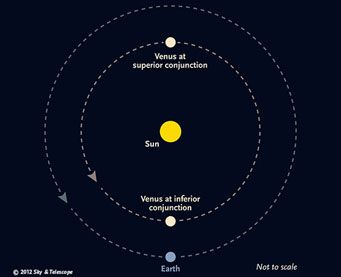
Los tránsitos de Venus sólo pueden ocurrir cuando Venus pasa entre el Sol y la Tierra, un punto en su órbita conocido como conjunción inferior.
CALLE
En primer lugar, y lo más obvio, Venus debe moverse directamente entre la Tierra y el Sol para que un observador imaginario que mirase el sistema solar desde arriba vea los tres cuerpos formando una línea perfectamente recta. Cuando esto ocurre, los astrónomos dicen que Venus ha alcanzado una conjunción inferior . Venus orbita el Sol más rápido y en una órbita más pequeña, y alcanza estas conjunciones inferiores cada 584 días terrestres.
Si Venus y la Tierra orbitaran alrededor del Sol en el mismo plano, disfrutaríamos de un tránsito de Venus cada 584 días, y el tránsito del 5 de junio no sería tan importante. Pero en realidad, el plano orbital de Venus está inclinado 3,4 grados con respecto al plano orbital de la Tierra. Los planos se cruzan en dos puntos llamados nodos . Para que se produzca un tránsito, Venus debe estar en conjunción inferior al mismo tiempo que está en un nodo. Esta alineación tridimensional perfecta no ocurre muy a menudo. Normalmente, la órbita inclinada de Venus significa que se encuentra "encima" o "debajo" del Sol cuando se trata de conjunción inferior.
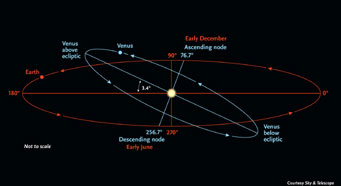
La órbita de Venus alrededor del Sol está inclinada respecto a la órbita de la Tierra (exagerada aquí para mayor claridad). Los tránsitos de Venus solo pueden ocurrir en los dos nodos, donde se intersecan los planos orbitales de Venus y la Tierra.
Ciencia y tecnología : Gregg Dinderman
Uno de estos nodos ocurre a principios de junio y el otro a principios de diciembre, lo que significa que estos son los únicos momentos en que pueden ocurrir tránsitos de Venus. A principios de junio, Venus parece estar descendiendo (o hacia el sur), por lo que los astrónomos lo llaman nodo descendente . A principios de diciembre, Venus se mueve hacia arriba (o hacia el norte) en su órbita, por lo que se trata de un nodo ascendente .
Un ciclo extraño
Hasta ahora, las cosas parecen bastante sencillas y directas. Pero aquí es donde el tránsito del ciclo de Venus empieza a volverse extraño (aunque también bastante interesante).
Durante los últimos siglos y los próximos, estas alineaciones tridimensionales perfectas se producen a intervalos de 8, 105½, 8 y 121½ años. En realidad, considérelo un ciclo de 243 años, con pares de tránsitos separados por tan solo 8 años, pero con cada par separado por más de un siglo.
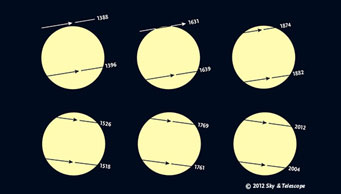
Se muestran las trayectorias de Venus a través del Sol desde el año 1388 hasta el 2012. La fila superior muestra los tránsitos de diciembre en el nodo ascendente de Venus y la fila inferior muestra los tránsitos de junio en el nodo descendente de Venus.
CALLE
Los tránsitos de nodos ascendentes ocurrieron en diciembre de 1631, 1639, 1874 y 1882. Los siguientes tránsitos ocurrieron en diciembre de 2117 y 2125. Los tránsitos de nodos descendentes ocurrieron en junio de 1761, 1769 y 2004, y el siguiente tuvo lugar el 5 y 6 de junio de 2012. Posteriormente, los tránsitos de nodos descendentes ocurrieron en junio de 2247 y 2255.
En los tránsitos de nodos descendentes con una separación de 8 años, Venus cruza la parte sur del disco solar en el primer tránsito y la parte norte en el segundo. Por eso, Venus cruzará la parte norte del disco solar el 5 o 6 de junio. Cuando Venus llegó a la conjunción inferior en 1996, estaba demasiado por debajo del Sol para transitar su disco. Y en 2020, estará demasiado alto.
Lo contrario ocurre con los tránsitos de nodos ascendentes. El primer tránsito de un par de ocho años cruza la parte norte del Sol, mientras que el segundo cruza la mitad sur.
Entonces, ¿por qué Venus tarda “solo” 105 años y medio en pasar de un par de tránsitos de junio a un par de tránsitos de diciembre, mientras que tarda 121 años y medio en pasar de un par de tránsitos de diciembre a un par de tránsitos de junio? Esta asimetría se debe a que la órbita de la Tierra alrededor del Sol no es exactamente un círculo perfecto. Es ligeramente alargada (el término técnico es excéntrica ), desviándose de un círculo perfecto en aproximadamente un 3 %. En cambio, la órbita de Venus está tan cerca de ser un círculo perfecto que su minúscula elongación puede ignorarse en este análisis.
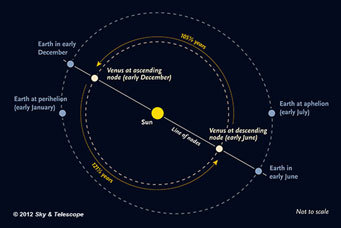
La órbita alargada (excéntrica) de la Tierra (exagerada en el diagrama) explica por qué hay una asimetría en la cantidad de tiempo entre un par de tránsitos y el siguiente.
CALLE
El diagrama de la derecha (en el que se exagera la excentricidad orbital de la Tierra para mayor claridad) muestra lo que está sucediendo. Básicamente, la Tierra está cerca de su punto más alejado del Sol ( afelio ) en junio y cerca de su punto más cercano al Sol ( perihelio ) en diciembre. Cuando la Tierra está más cerca de la poderosa gravedad del Sol, se mueve ligeramente más rápido en su órbita que cuando está más lejos del Sol. La diferencia en la velocidad orbital de la Tierra desde el perihelio hasta el afelio produce una brecha más larga (121½ años) entre el tiempo que tarda en alinearse entre los tránsitos de diciembre y junio que los 105½ años que tarda en alinearse entre los tránsitos de junio y diciembre.
Nada bueno dura para siempre
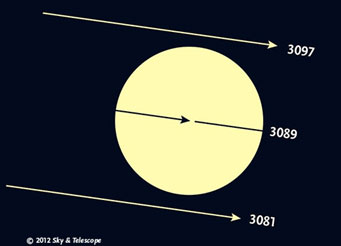
En el futuro, los tránsitos de Venus serán aún más raros. Este diagrama muestra la trayectoria que Venus seguirá frente al Sol en 3089. En 3081 y 3097, la trayectoria de Venus no tocará el Sol (desde la perspectiva terrestre).
CALLE
Desafortunadamente para los astrónomos que viven en un futuro lejano, la frecuencia de los tránsitos disminuirá. Tanto las órbitas de Venus como las de la Tierra precesan, lo que significa que giran durante largos períodos de tiempo para producir un patrón similar a una roseta. En otras palabras, el perihelio de la Tierra se desplaza en su órbita, al igual que el de Venus. Debido a la precesión, los astrónomos terrestres solo podrán disfrutar de un tránsito de nodo ascendente durante siglos después del año 3000. Verán un tránsito de nodo descendente en 3089, pero ocho años después, en 3097, Venus alcanzará una conjunción inferior demasiado por encima del Sol como para transitar su disco.
Y a lo largo de decenas de miles de años, el ciclo de 243 años acabará cambiando a medida que la excentricidad de las órbitas de Venus y la Tierra evolucione debido a las perturbaciones gravitacionales de otros planetas. En escalas de tiempo aún mayores, se imponen efectos caóticos, y las matemáticas se vuelven tan inciertas que los astrónomos actuales ya no pueden predecir cuándo ocurrirán estas raras alineaciones celestes ni cómo serán los ciclos futuros.
Pero por ahora, puedes estar seguro de que habrá un tránsito de Venus el 5 o 6 de junio y, a menos que la medicina moderna haga un milagro, esta será la última oportunidad que tendrás de ver un tránsito de Venus desde la superficie de la Tierra.
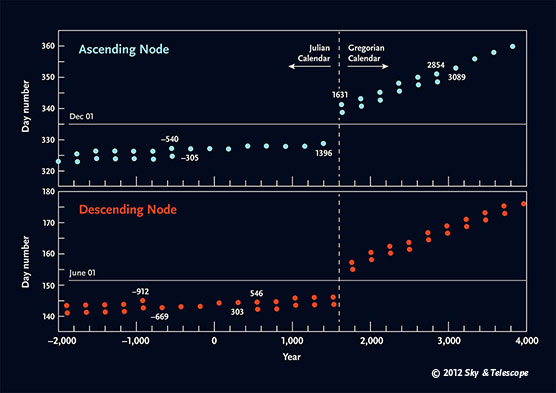
Al representar gráficamente el número de días de cada año en que ocurre un tránsito de Venus, es fácil observar su comportamiento a largo plazo y la suerte de vivir en un período en el que podemos observar dos tránsitos tanto en el nodo ascendente como en el descendente. Observe el cambio del calendario juliano al gregoriano alrededor del año 1600. El astrónomo jubilado de la NASA, Fred Espenak, proporcionó a S&T los datos para este diagrama.
Cortesía de Sky & Telescope
|
|
|
|
Rispondi |
Messaggio 5 di 17 di questo argomento |
|
El pentagrama es una firma geométrica de Venus, lo que tiene mucho sentido en el contexto actual.
On June 5-6, 2012, a transit of Venus occurred, where Venus appeared as a small, dark spot passing across the face of the sun. This rare astronomical event happens in pairs, eight years apart, and is separated by 105 or 121 years. The transit began at 22:09 UTC on June 5, 2012, and ended at 04:49 UTC on June 6, 2012. The exact times varied by up to ±7 minutes depending on the observer's location.
|
|
|
|
Rispondi |
Messaggio 6 di 17 di questo argomento |
|
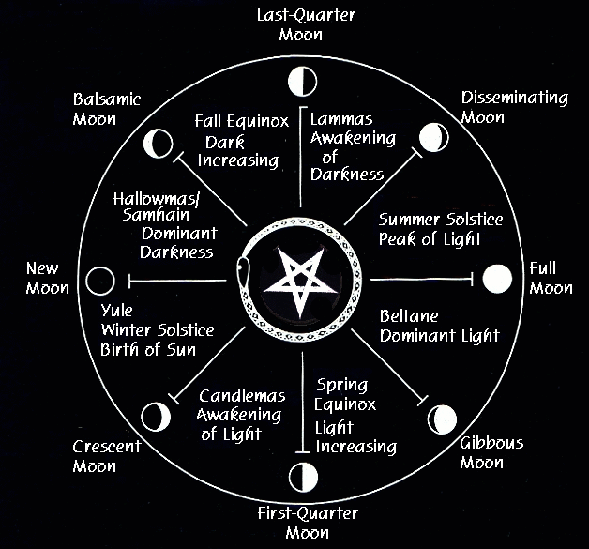

The letter S is the 19th letter of the Latin alphabet and the English alphabet. It is also used in other Western European languages and other Latin alphabets.
  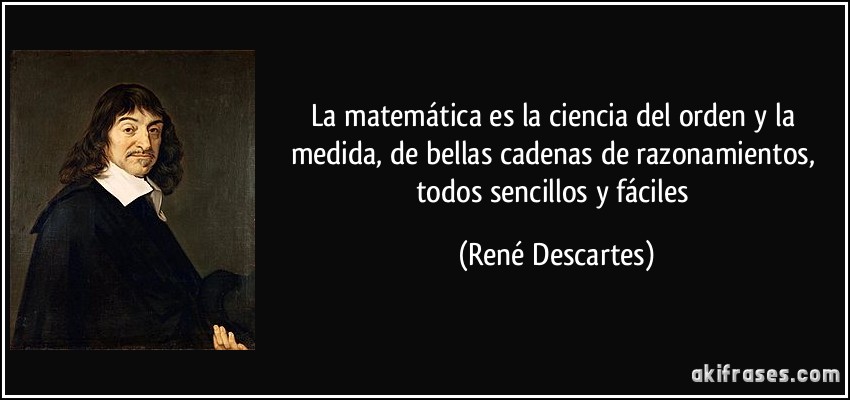 
POPE NUMBER 266
9 LUNAR MONTHS=266 DAYS
FR-ANC-ISCO / J-ANUK-A
1/1-23/9 GREGORIAN CALENDAR=266 DAYS
266 DAYS=19*2*7 DAYS (SATURDAY)=WOMAN IN PREGNANT=LUNAR PHASE (36=4*9) (1+2+3+4+...36=666)
10/3-30/11 (JANUKAH=JOHN 10 22=24/9-KISLEV HAGGAI 2 10 )=266 DAYS
10 On the twenty-fourth day of the ninth month, in the second year of Darius, the word of the Lord came by Haggai the prophet, 11 “Thus says the Lord of hosts: Ask the priests about the law: 12 ‘If someone carries holy meat in the fold of his garment and touches with his fold bread or stew or wine or oil or any kind of food, does it become holy?’” The priests answered and said, “No.” 13 Then Haggai said, “If someone who is unclean by contact with a dead body touches any of these, does it become unclean?” The priests answered and said, “It does become unclean.” 14 Then Haggai answered and said, “So is it with this people, and with this nation before me, declares the Lord, and so with every work of their hands. And what they offer there is unclean. 15 Now then, consider from this day onward. Before stone was placed upon stone in the temple of the Lord, 16 how did you fare? When one came to a heap of twenty measures, there were but ten. When one came to the wine vat to draw fifty measures, there were but twenty. 17 I struck you and all the products of your toil with blight and with mildew and with hail, yet you did not turn to me, declares the Lord. 18 Consider from this day onward, from the twenty-fourth day of the ninth month. Since the day that the foundation of the Lord's temple was laid, consider: 19 Is the seed yet in the barn? Indeed, the vine, the fig tree, the pomegranate, and the olive tree have yielded nothing. But from this day on I will bless you.”

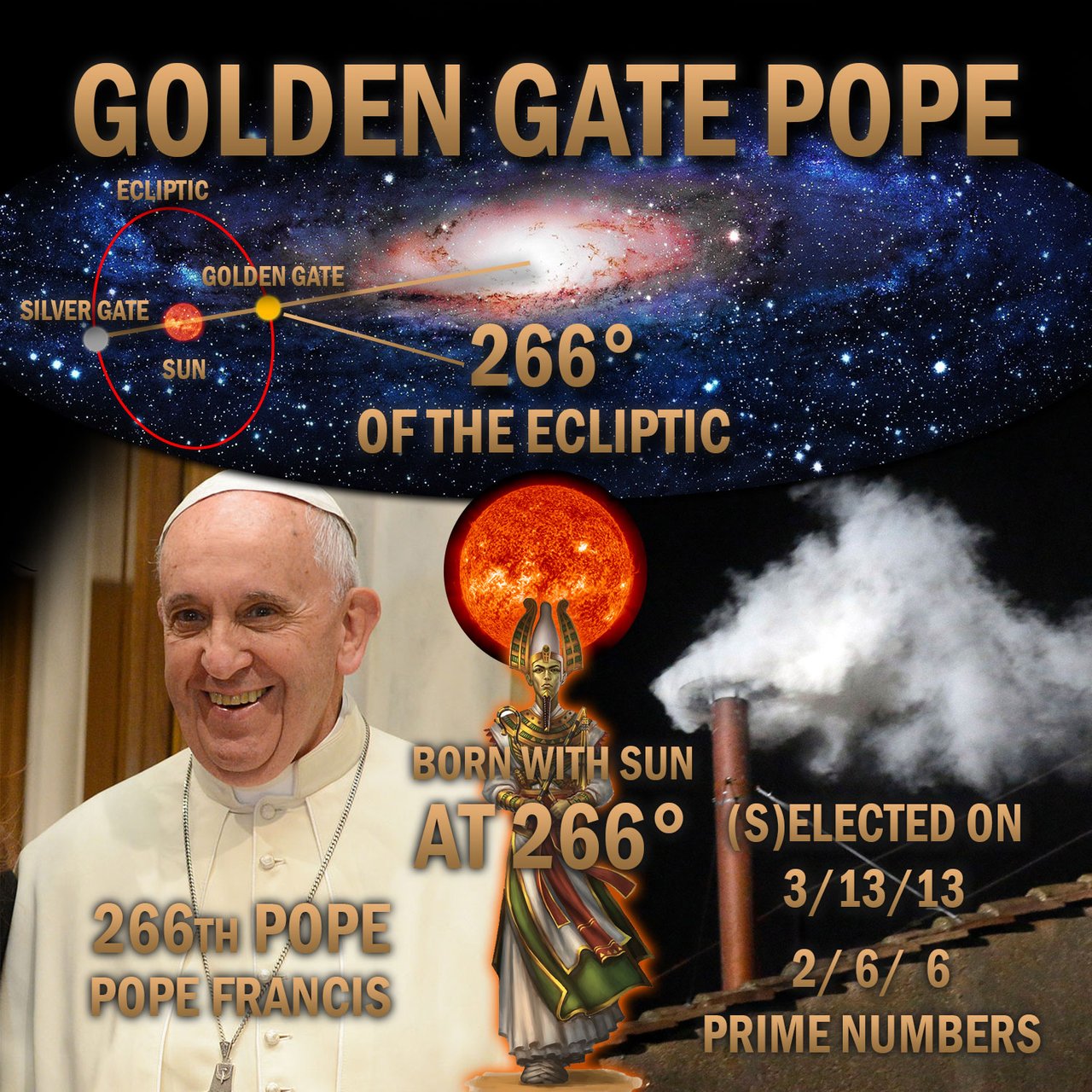
|
|
|
|
Rispondi |
Messaggio 7 di 17 di questo argomento |
|
Contact via Earthquakes
Pentagonal Stargate Activation 2010
February 27, 2010
by Goro (supertorchritual.com & goroadachi.com)



Enki works in mysterious ways. He sees the angles. He sees the alignments. He understands space. He understands time. It's '2010' and he comes in peace. Contact via earthquakes... This is it. This is how it begins...
Haiti - Chile Alignment...

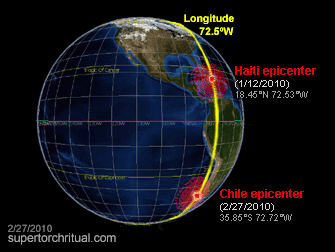

Behold, the Earth-Shaker opens the Pentagonal Stargate...


The pentagram is the symbol of Venus. Venus is the goddess/planet of love. Love in many languages is amor. Amor is the reverse of Roma. As they say, all roads lead to Rome. Even the pentagram. The Pentagonal Contact Sequence started back on April 6, 2009 near Rome...


Orbitally reversed and it becomes Megafault starring Brittany Murphy (who had an Italian father linked to the mob)...

...whose untimely death marked the winter solstice 2009 at the apex of the pentagonal 'V' apex.
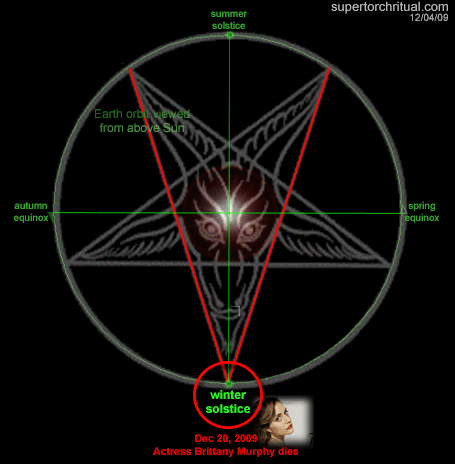
'Vs' of course come in peace...


...through a Pentagonal Stargate

...and an earthquake.

'Knee' = Rome in leg-shaped Italy...

'Ring' = Pacific (= 'peace') Ring of Fire...
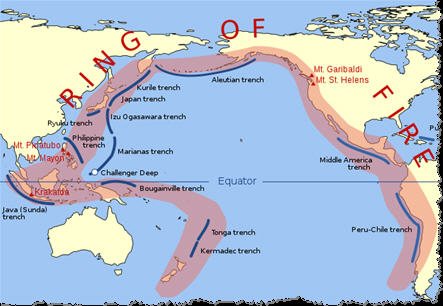
Chile is in the Ring of Peace/'V'...
And 'V' is balloons...

...reenacted right before the 'V' premiere (Nov 3, 2009)
via Balloon Boy on Oct 15...


...which was orbitally 'stereo aligned' with Feb 25-26,
or the Chile 'Big One' (Feb 27).

Contact via earthquakes = Contact with V = Contact with Peace = Contact with Love (Rome, Venus) = Contact via Pentagram
All in the 'Big One' space-time geometric overlay...

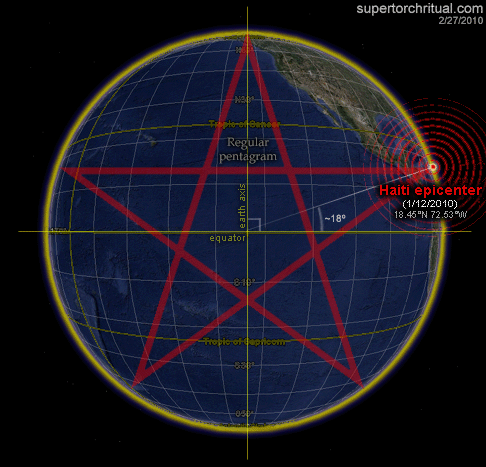

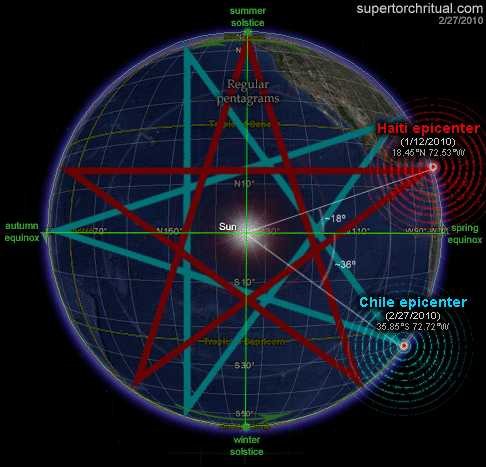

And that's how Contact is being made in 2010.
Just the tip of the iceberg.
* * *
NOTE: For those new here, please note that this strange thing that I do on this website is not the typical hindsight-driven dot connecting stuff that you may have seen out there. Here, much emphasis is placed on foresight. I regularly make predictions or multicontextual pattern projections to demonstrate that it is something very real - albeit 'impossible' according to the current paradigm - that I discuss and try to show again and again. So, for instance, even though I decided not to bring it up in the main text of the article purely for readabililty, both the April 2009 Italian earthquake and the January 2010 Haiti 'Big One' were, to a considerable degree, projected beforehand. (See here & here - the latter not including STRUG entries thus appearing less impressive than what was actually going on 'underground' projection-wise.) Even the latest Chile mega-quake was no surprise around here (especially on STRUG) - evidenced by the fact that I was able to quickly write up and post this article within 24 hours of the catastrophe. For many months, in fact, I kept highlighting the Vancouver Olympics (Feb 12-28) and its general timeframe, based on various patterns, in particular the following golden/phi-based timecode which had 'Big One' (mega-quake) written all over it.
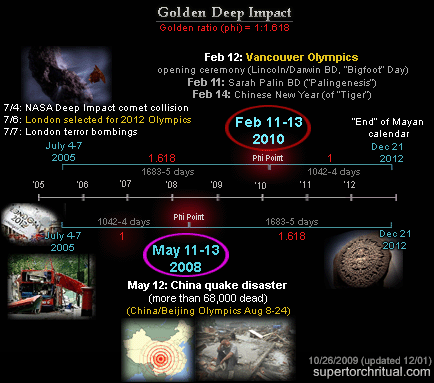
Not surprisingly, there was to be further twists which I was able to closely follow, leading me to make a necessary adjustment just in time for (i.e. before) the early-January quakes including Haiti. (I haven't yet fully explained what caused me to make the adjustment but that it was a valid move is obviously not in question.) After Haiti, the status of the February 2010 window became uncertain - was it still radioactive or had it released all its energy in January? We now know the answer: Another small time shift, another 'Big One' (this time in Chile), coming the day before the closing ceremony of the 'V Olympics' instead of the opening ceremony. And it was decidedly pentagonal in nature. This is important because in addition to what's already been discussed the pentagram is nearly synonymous with (i.e. found encoded in its geometry) the golden ratio, i.e. '1 : 1.618', therefore linking back to the phi-based timecode above.

* * *
To be continued...
https://www.goroadachi.com/etemenanki/contact-penta-quakes.htm
|
|
|
|
Rispondi |
Messaggio 8 di 17 di questo argomento |
|
|
|
|
Rispondi |
Messaggio 9 di 17 di questo argomento |
|

El período sidéreo es el tiempo que tarda el objeto en dar una vuelta completa alrededor del Sol, tomando como punto de referencia una estrella fija . Se considera el auténtico período orbital del objeto, y sería el que vería un observador inmóvil que no orbitara alrededor del sol.
El período sinódico es el tiempo que tarda el objeto en volver a aparecer en el mismo punto del cielo respecto del Sol, cuando se observa desde la Tierra. Este período tiene en cuenta que la Tierra, lugar desde el que es observado el objeto, también orbita en torno al Sol. Es por tanto, el tiempo que transcurre entre dos conjunciones sucesivas con el Sol, y es el período orbital aparente.
https://aacc1esob.wordpress.com/2013/12/16/periodo-sidereo-y-sinodico/ |
|
|
|
Rispondi |
Messaggio 10 di 17 di questo argomento |
|
|
|
|
Rispondi |
Messaggio 11 di 17 di questo argomento |
|
On June 2, 2025, Venus is located in the constellation Pisces. Its Right Ascension is 01h 39m 15s and Declination is +07° 56' 52". From Capital, Tucumán, Venus is visible in the South-South-West direction at an altitude of -18.72 degrees. It is currently a bright object, with a visual magnitude of -4.40, making it easily visible with the naked eye even in light-polluted areas.
- Constellation: Pisces
- Right Ascension: 01h 39m 15s
- Declination: +07° 56' 52"
- Direction: South-South-West
- Altitude: -18.72 degrees
- Magnitude: -4.40
|
|
|
|
Rispondi |
Messaggio 12 di 17 di questo argomento |
|
|
|
|
Rispondi |
Messaggio 13 di 17 di questo argomento |
|
Venus inferior conjunction, 23 March 2025
Venus heads towards inferior conjunction on 23 March 2025
Save 30% on the shop price when you subscribe to BBC Sky at Night Magazine today!
Published: March 11, 2025 at 8:47 am
Venus has been an evening beacon in early 2025, but that’s about to change as the planet heads towards inferior conjunction on 23 March, the position in its orbit closest to Earth.
Thereafter, it will begin to emerge as a morning object in the sky.
In recent weeks, Venus has been approaching us, moving along part of its orbit closest to Earth.
Its apparent sunward crawl accelerates as it moves towards inferior conjunction.
Lined up with the Sun in the sky, at inferior conjunction Venus is also closest to Earth.
 A diagram showing Venus's orbit and its positions at conjunction and greatest elongation. Credit: Pete Lawrence
Venus phases
Like the Moon, Venus shows phases and over recent weeks has appeared as a shrinking crescent through the eyepiece.
All the while, its apparent diameter has been expanding, reaching around 1 arcsecond across at inferior conjunction.
At this time, Venus will be at its slimmest phase.
Unlike the airless Moon, which essentially disappears when new, Venus’s atmosphere can illuminate all the way around to form what’s known as an atmospheric ring.
Unfortunately, this won’t be seen in March 2025, as this inferior conjunction takes Venus too wide of the Sun’s centre, at 8.4° separation.
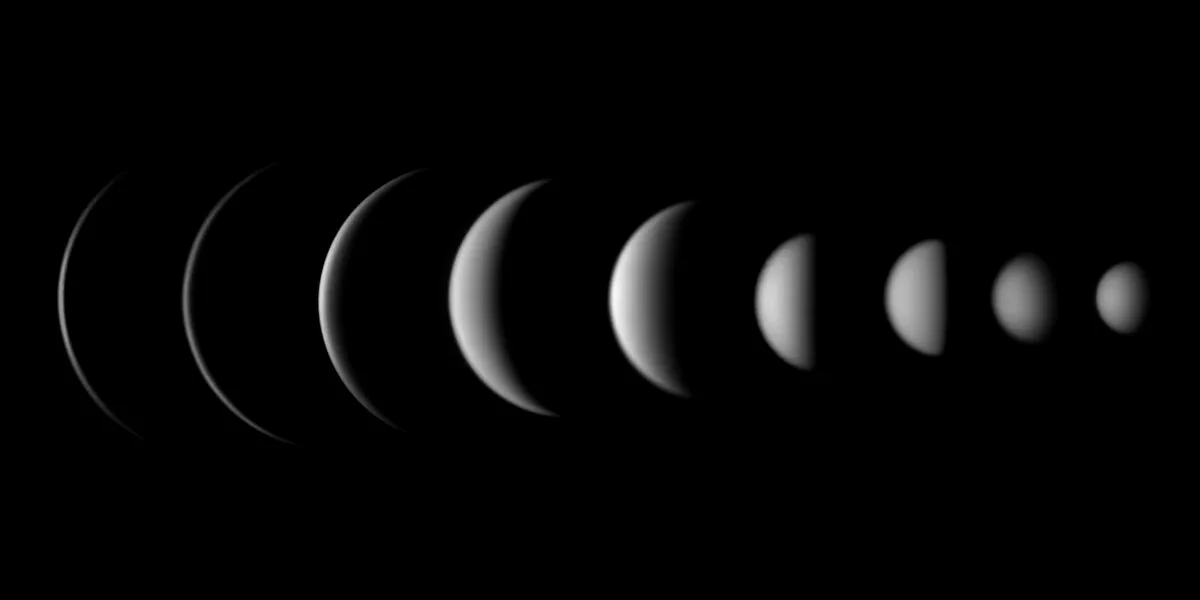 Phases of Venus. Credit: Pete Lawrence
Observing Venus at inferior conjunction
With care and attention to safety, it is possible to locate and image Venus in this position, but it’s not safe to look at it through the eyepiece of a telescope.
This should only be attempted if you know what you’re doing and have experience with finding Venus close to the Sun.
https://www.skyatnightmagazine.com/advice/see-and-photograph-thin-crescent-venus-as-it-reaches-inferior-conjunction
|
|
|
|
Rispondi |
Messaggio 14 di 17 di questo argomento |
|
|
|
|
Rispondi |
Messaggio 15 di 17 di questo argomento |
|
As we noted back then, Kylie is also striking an " Atlas pose"...

...supported by the fact that "Atlas" (atl) can mean "elevator" as researcher Andrew Collins writes in Gateway To Atlantis:
...in addition to meaning 'exalted', the Hebrew word atl, and indeed its variations, can also mean 'elevated'...
Since we know that Mount Atlas was deemed to be the petrified Titan supporting the heavens on his shoulders, Atlas' name is therefore intrinsically linked with his action of having elevated or raised up these misty heights. Clearly, then, this connection strongly suggests that the name Atlas does not derive from the Indo-European language of the Greeks but from the Punic language of the Carthaginians - furthermore, that the word root atl does not mean 'to bear' but 'to elevate' or 'to raise'... If this was the case, it tells us that, as a noun, Atlas, and indeed ATLA, might well translate as 'the elevator', 'the exalter', or indeed 'the exalted one'. (Andrew Collins, Gateway to Atlantis, p.200)
This is highly significant in our current context as the Atlas-Venus-elevator combination is exactly what was part of our decoding of CERN's LHC, as I noted in my article CERN's Orion Stargate (Oct 8, 2015):
- The LHC experiment installation ATLAS is right at the contact point of the SPS and LCH loops (which are geometrically tangent circles)
- The SPS's center pinpoints Venus at its ascending node (i.e. where Venus crosses the ecliptic plane northward)
- "Ascending" can imply "elevating/elevator"
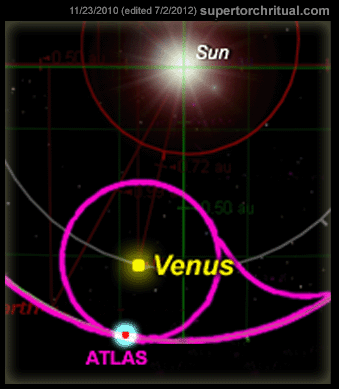
Venus will be right there on June 6-7, 2016 - Prince's birthday - precisely at the time of its heliocentric alignment with Earth (superior conjunction)!

In addition to his birthday being a key clue, Prince from 1993 through 2000 was known as "The Artist Formerly Known As Prince" identified only with what came to be known as the " Love Symbol". Venus is the goddess of love and Prince's Love Symbol is based on the astrological Venus symbol.
Not only that, Kylie Minogue (= Aphrodite/Venus) revealed shortly after Prince's death via Instagram that she and Prince recorded an (as yet unreleased) "secret song" together back in the '90s:
The Devil is whispering...
To be continued.
[End of "Prince of Darkness - Part 1"]
So those are some of the more visually engaging clues pertaining to the upcoming window of late May-early June 2016. Let me go ahead and introduce one more big piece of the puzzle. This one ominously having to do with... "Deep Impact".
 
NASA's Deep Impact mission was all about smacking a comet near the orbital path of Mars and it was successfully accomplished on July 4th, 2005. As shown below, Comet Tempel-1 "kisses" Mars' orbit (i.e. tangent), and it was right there that the comet's encounter with Deep Impact took place, almost exactly where the two orbital paths converge. In this way the mission was implicitly a "Martian Deep Impact".

...right at the time of the dramatic Chilean mine rescue on October 9-13, 2010, (yet another event/clue from 2010 - aka "The Year We Make Contact"), featuring a lot of inverted pentagrams...
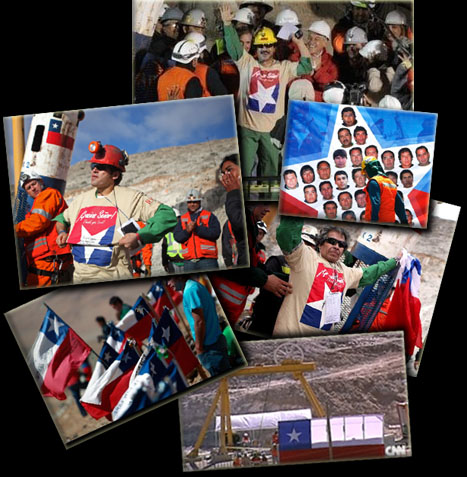  [Kylie Minogue is from Down Under (Australia) or "Underworld"]
...and an elevator!
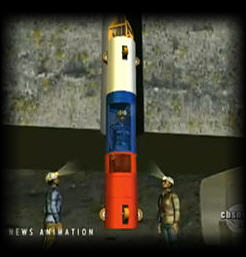 
It was named Fenix/Phoenix...

...resonating again with Mars via NASA's Phoenix Mars Lander (2008):
 * * *
It will be fascinating to see what happens. Will it be subtle, as per "the devil's in the details", or a bona-fide "Deep Impact" event? We'll find out soon enough. There are other significant windows coming up later this year, notably one around early August. We've already looked into that one extensively on STRUG and it looks a bit... earthshaking, geologically, financially, etc. But we still got time before that.So that's enough for now. Let's get ready for the "hidden form"...
* * *
https://www.goroadachi.com/etemenanki/hidden_form.html |
|
|
|
Rispondi |
Messaggio 16 di 17 di questo argomento |
|
|
|
|
Rispondi |
Messaggio 17 di 17 di questo argomento |
|
|
|
 Primo Primo
 Precedente
3 a 17 de 17
Successivo Precedente
3 a 17 de 17
Successivo
 Ultimo
Ultimo

|
|
| |
|
|
©2025 - Gabitos - Tutti i diritti riservati | |
|
|




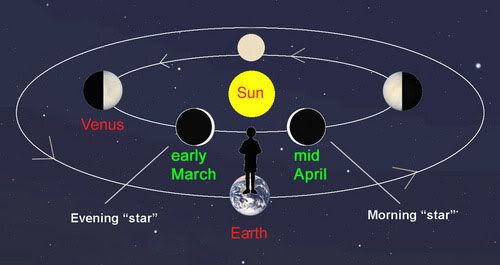










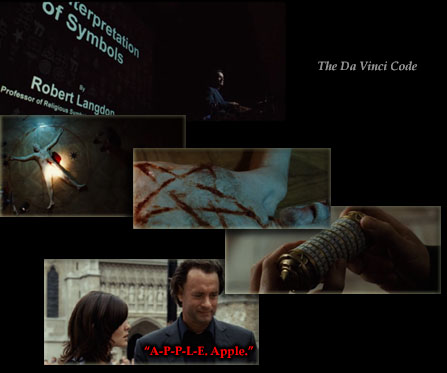
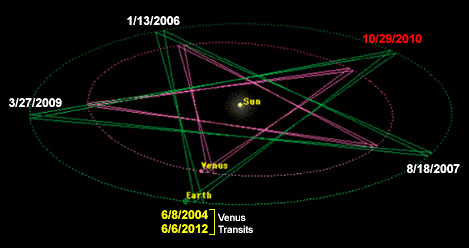
















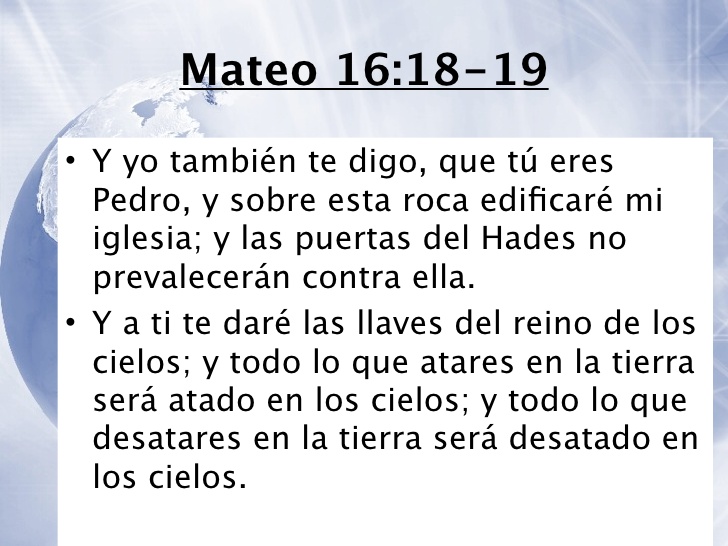






























 A diagram showing Venus's orbit and its positions at conjunction and greatest elongation. Credit: Pete Lawrence
A diagram showing Venus's orbit and its positions at conjunction and greatest elongation. Credit: Pete Lawrence
 Phases of Venus. Credit: Pete Lawrence
Phases of Venus. Credit: Pete Lawrence
